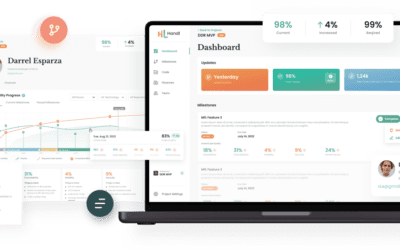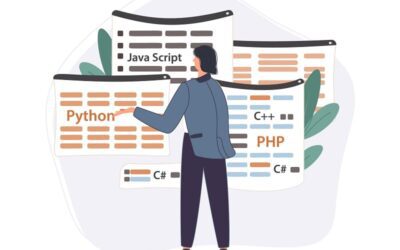
Ever heard of the ‘my baby is beautiful’ delusion? It goes a bit like this…
A couple has their first baby. It’s okay — not ugly or cute. But because it’s their ‘special baby’, the parents see it as the most beautiful thing in the world.
Their friends also have a baby. It’s a much cuter baby. All of their friends agree this baby is cuter.
But rather than seeing the truth, the first baby’s parents continue to insist their baby is the cutest. They rebuff any counter. They ignore explanations. They don’t want to hear the truth.
The parents can’t reconcile their view of their baby with the world’s view. They’ve fallen prey to a cognitive bias that renders them blind to reality.
This exact bias pops up among founders and entrepreneurs when it comes to their product ideas, too.
And it’s precisely why new products need both quantitative and qualitative data that validates their ideas.
It’s because validation is about being objective and building a product the market wants (and not what you think they want).
Validation means identifying that there is a problem, that your product has the potential to solve that problem, and that your product can solve it in a financially viable way.
It’s about putting data behind what often starts as a gut-feel idea so you’re confident that you’re building a product that your audience actually wants.
This validation happens in 3 phases:
- Gap validation — proving that there is a problem that you can solve
- Product validation — Proving that your solution to the problem is something people actually want (and will pay for).
- Financial validation — proving that the price and the costs add up to a viable business.
Here’s how you validate your idea in each of those phases:
1. Gap validation

This stage is about gathering enough data to prove that there is a real problem to solve and a big enough audience that it’s worth solving.
Now, how you go about gathering these data points completely depends on your business:
If you’re brand-new you’ll need more data to know you have an audience and understand the customer, problem, and outcome.
If you’re an existing business, you should already have access to a lot of this data within your existing products and business models that can offer you insight into the customer problems that need to be solved.
In the interests of detail, we’ll start with finding data from scratch.
How to validate a problem
There are several ways to do this — through a simple survey, a landing page, cold-calling, or audience interviews.
No matter how you gather the data, you’re looking for information that will help you answer these three questions at scale:
- Is this a problem your audience wants to solve?
- Is this a problem for enough people that it’s worth solving?
- Can you reach and market to these people?
If your data says “yes” to these three questions, you can go forward with the confidence that you have a problem that people want solving — and that’s a great start.
Above all else, the one thing you must do is speak to your potential customers (not your friends, family, or other entrepreneurs). Research reports and statistics aren’t a substitute for real audience feedback. Without real customer input, you’re just guessing.
For example, we worked with a client who wanted to build a feature that explained and calculated the “Cooling-Off” period in property purchases. Before committing development resources, we validated the problem by interviewing recent homebuyers. It quickly became clear that most already had this information from their agents or lawyers, and it wasn’t a pressing pain point. That insight helped avoid building a low-value feature — saving time, money, and focus for what really mattered to users.
The problem with these validation tests is that they test market attractiveness, not how well it solves a problem. You’re not able to test that the process that solves the problem actually works because it doesn’t exist. That’s the next step in your validation process: Product validation.
2. Product validation

This is where you define exactly how you solve the very real problem you identified in step 1.
That means answering questions like:
- What does the cost structure look like?
- What price will people pay for this?
- What are your team costs?
- How much will it cost to advertise to your audience?
- What are the different ways to generate revenue?
How to validate a product
This starts with plain English language and questions like, “does this solve your problem?”, “would you use this feature?”, “why don’t you like this?”, or “why doesn’t this work?”.
Then it evolves into wireframes and product screens that flesh out how the product works. These don’t have to be anything fancy, they just have to be enough to verify whether the way you’re solving your problem works for your audience.
Finally, it’s a full-blown functional prototype. This prototype will, at least, outline the resources you need to create your product and highlight which areas of the product work and which ones don’t, and it will help you more precisely capture what your audience is trying to achieve and where you can increase your value.
And, surprise surprise, that means you must stick these prototypes and screens in front of potential customers to understand what works and what you can ignore.
3. Financial validation

The final product validation step makes sure your product is financially viable.
That means answering questions like:
- What does the cost structure look like?
- What price will people pay for this?
- What are your team costs?
- How much will it cost to advertise to your audience?
- What are the different ways to generate revenue?
How to validate a business model
The final step to validating your business model is about capturing the value you’ve created with the previous segments.
More surveys and competition pricing research should help identify the best revenue model for your business. There is no singular model — the most effective revenue model depends on your product and audience. But once you‘ve landed on pricing, testing your estimated price points is easily done in focus groups or with the help of a simple landing page.
With the creation of a prototype in the previous step, you’ll have an idea of the costs of building a solution. That means you can begin to evaluate your business through financial models — that is, work out how much money you think you’ll make after you’ve covered all of your costs. There are hundreds of financial modelling how-tos out there, but here are some of my favourites:
- The SaaS Financial Model You’ll Actually Use (Updated 2020)
- Startup financial models – 12 templates compared for SaaS
- SaaS Financial Model: Simple Template For Early-Stage Startups
Aligning your pricing with these revenue metrics means you can build a clear picture of how much your product stands to make or lose and start looking for efficiencies within the business.
P.S. When you start validating these metrics, you want to focus on the worst and the best-case scenarios. These will act as helpful benchmarks as you start tracking real metrics later on.
Validation = product confidence
If all of these steps are done objectively, it lets you move forward with confidence, knowing your product is something customers want and will pay for. More than that, you know you’re building a product that is going to work out and have a positive impact on your customers and your businesses bottom line.
But on a final note, it’s important to recognise that none of these validations are set in stone. Some will require further refinement and others will completely change because the market and competitive landscape shifts. Don’t fear going through the product validation process again as the world around you changes. Because if you don’t adapt to the world around you, you risk being left behind.




